How to grow tomatoes even if you don't have a backyard
While crafting a sandwich, have you ever thought to yourself, "Wow, wouldn't it be nice if I could just pluck my own tomatoes off the vine to slice up and pile on this?"
Well, the process of growing your own tomatoes is actually easy than you think — and incredibly rewarding. The most important factors are sunshine, water and fertilizer. The tomato is very resilient — it can grow with limited space and thus is ideal for urban gardening.
There’s no better time than now to get started with seedlings or small plants — which you can pick up at your local farmers market or plant store — and enjoy the fruits, so to speak, of your labor. When planting, wait until after the last frost of the season. If cooler weather is looming, cover pots with burlap sacks or frost cloth for protection, or bring them indoors. The best times to plant tomatoes are early in the morning or late in the day so the plants aren’t exposed to the hot sun right away.
Related: Scientifically it's a fruit, but legally it's a veggie. Here's why people are still confused.
To get started, you’ll need pots or containers, potting mix, tomato seedlings or small plants and some fertilizer.
1. Pick a sunny location
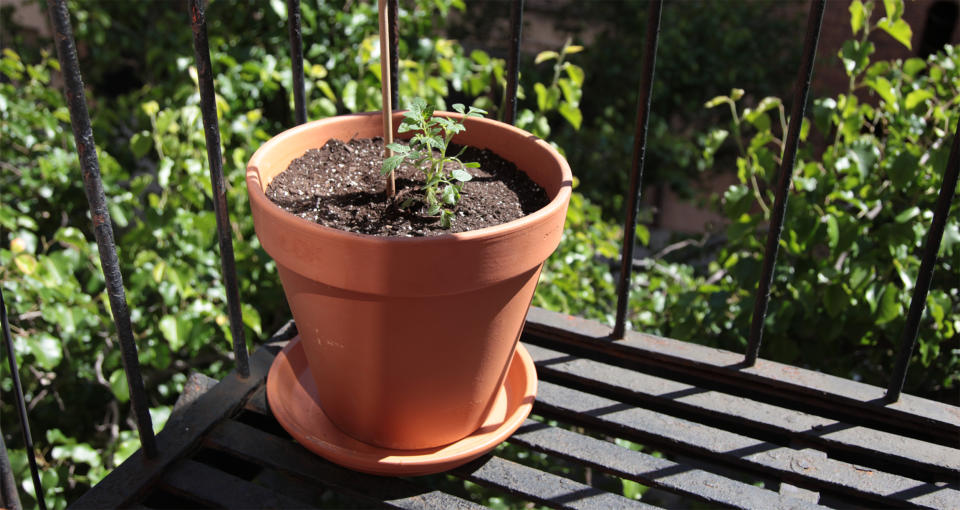
Pick a spot that gets plenty of sunshine (at least 6 hours, but 8+ hours is ideal) and is sheltered from the wind. Be sure to keep an eye on the sun throughout the season: What was once a sunny spot at the start of the growing season can become shadier as the sun changes position in the sky.
2. Choose the right container
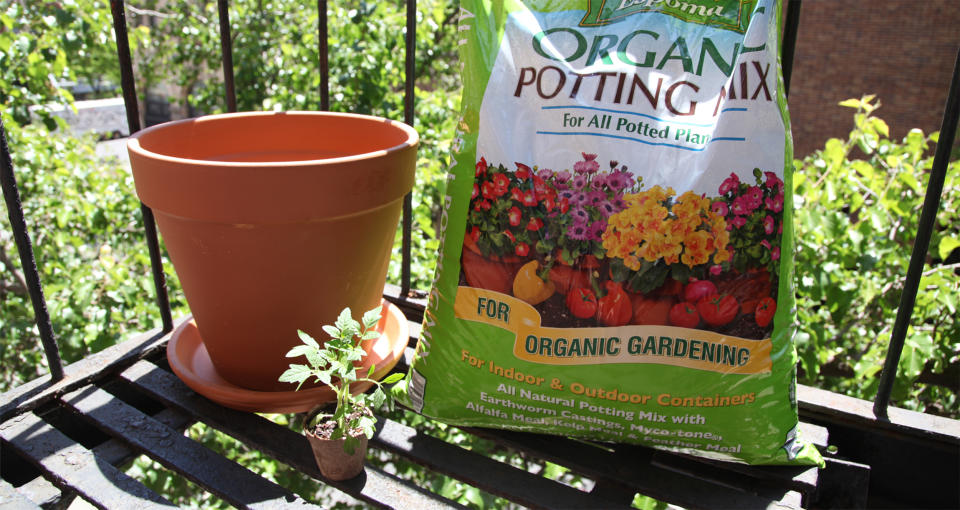
The bigger, the better: A 5-gallon bucket per plant is ideal but a 1-square-foot pot will also work. If you’re using buckets, make sure you drill holes in the bottom so the soil can drain. Place the container in a shallow dish that will hold the excess water so it can be easily absorbed and you can minimize the mess.
3. Good soil is key

The soil you choose will affect the health of your plants, so be sure to select a high-quality potting mix that makes it easy for plants to anchor their roots. The mix should be able to drain well to avoid mold or rot but retain some moisture for the roots to drink.
4. Select your favorite variety based on space
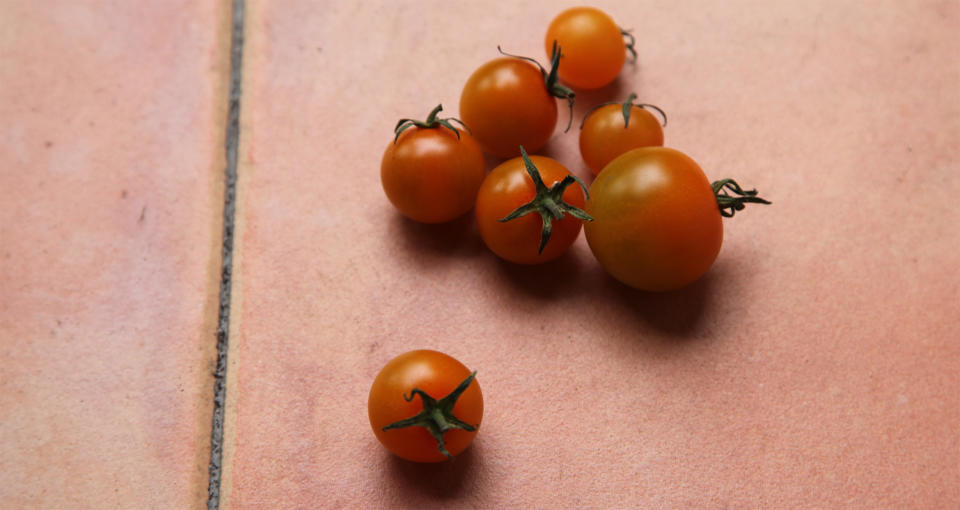
Smaller tomato varieties grow best in pots and containers. They are also the most rewarding, as they tend to yield more — and better quality, sweeter — tomatoes. Plus, they ripen more quickly so you aren’t staring at green tomatoes for too long. In general, the types of tomatoes that grow best in pots are determinate species — those that reach a certain size and then the plant stops growing (non-determinate varieties just keep on getting taller and taller).
5. How to plant tomatoes
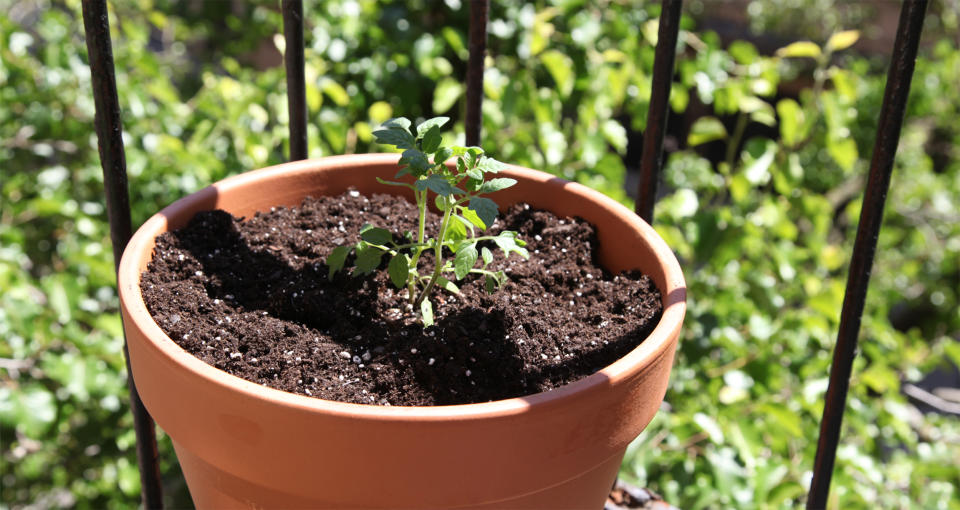
Fill each container halfway with potting mix. Then, place a stake in the soil to provide support and avoid damaging the roots later on. If you’re using seedlings grown in peat pellets, you can pop them straight in, container and all (this will eventually break down). If you’re using a larger plant, gently loosen the roots of your plant and position it in the center of the container. Scatter potting mix around the sides of your plant, filling the container up to 2 inches from the top. Press gently around the sides of the plant to secure it and remove any air from around the roots, making sure the stake is parallel to the plant.
6. How to water tomatoes
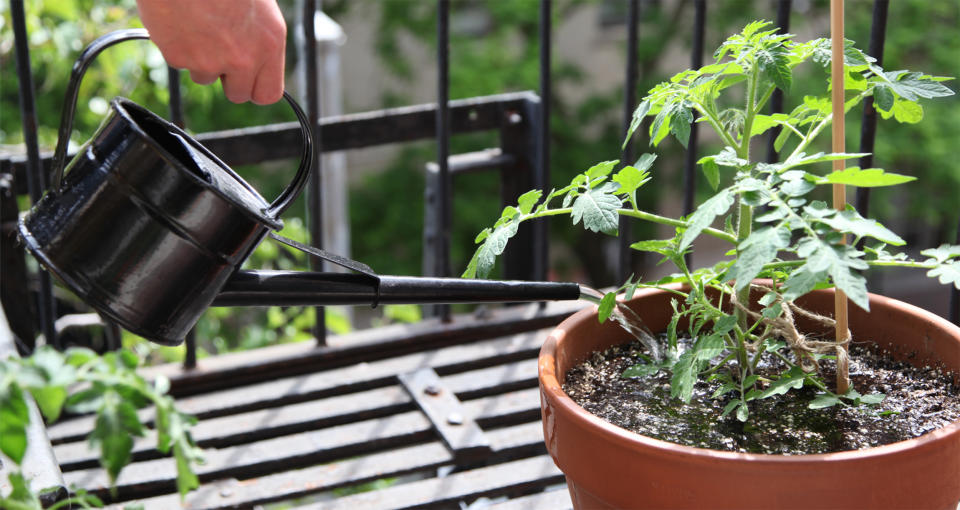
As a rule of thumb, a good, deep soak two to three times a week is better than regular light watering. Make sure you are watering the soil — not the leaves of the plants. Also, keep in mind that soggy soil and moist soil are not the same thing: If your soil is unable to drain and gets soggy, the roots will rot.
7. Feed your plant with fertilizer

Tomato plants thrive when they are well-fed. Nitrogen will make your plants lush and green, phosphorous encourages fruit growth and potassium enhances fruit color and flavor. Choose a fertilizer that is low in nitrogen and higher in phosphorus and potassium, as too much nitrogen will discourage fruiting. Check your potting mix to see if it contains these ingredients, and if not, select a controlled-release fertilizer to add to your pots when planting. You’ll need to continue to feed the plants throughout the season to keep them healthy.
8. How to care for growing plants
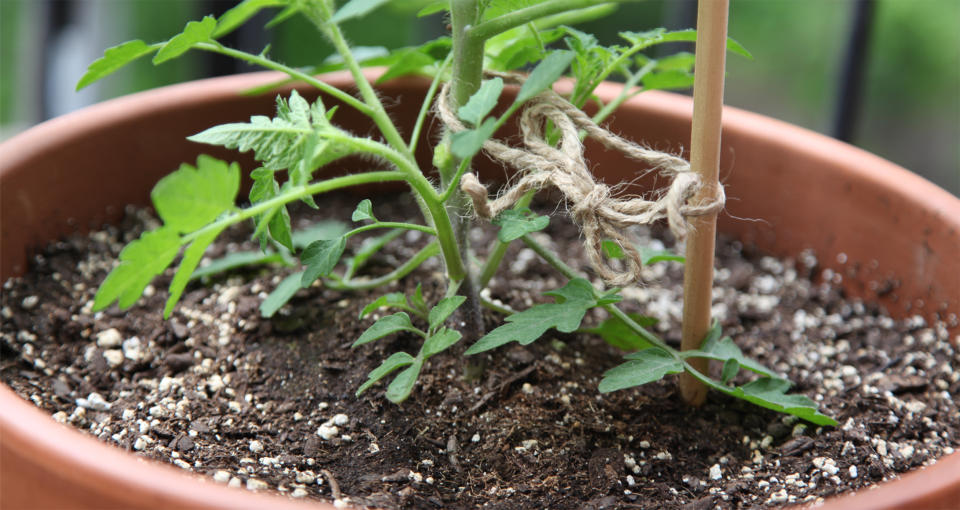
As your plants grow, use garden twine to secure them to the stake which will keep them supported. Once your plants flower, you can expect their first fruit about 30 days later. As your plants grow, remove the laterals — shoots that grow in a V-shape between the main stem and leaves — to encourage bigger and better fruit.
9. Be vigilant about plant diseases
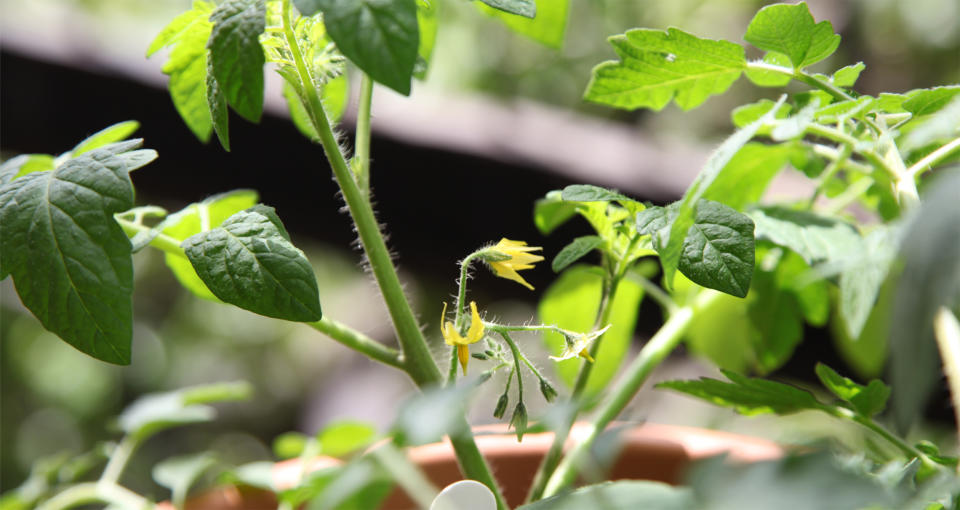
Tomato blight is the most common disease that affects tomatoes — especially in humid areas — which causes leaves to rot, discolor and collapse. To prevent it, make sure you give plants plenty of room to breathe and keep the leaves dry. Inspect your plants frequently: If you detect blight, remove affected leaves from the plant and dispose of them off-site to discourage the disease from spreading. Copper sulfate spray, which you can find at your local plant store, is an effective and organic way to treat blight.
10. How to enjoy fresh tomatoes

Keeping pace with your tomato harvest can be challenging, so look for alternative preparation methods rather than just enjoying them fresh from the vine. Slow-roasted tomatoes are infinitely useful — puréed into a sauce for pasta, mixed into couscous, used as a base for baked lamb, fish or chicken dishes, or frozen and used in colder months to pack a summery punch into winter meals.
Everyday Tomato Sauce by Anthony Contrino

